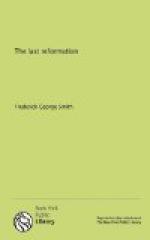The terms ordinarily used to measure the duration of time may be and often are used in a symbolic sense; for time, as well as anything else, can be symbolized. Thus days may properly symbolize years; for they are analogous periods of time, the diurnal revolution of the earth being taken to represent the earth’s annual movement. Other standards of reckoning may also be employed symbolically, but the one here referred to is doubtless most frequently employed. Such a system of reckoning time was known anciently. The Mosaic law recognized two kinds of weeks, the first of seven days’ duration, the last day of which was a Sabbath; another week of seven years’ duration, the last year being a Sabbath of rest for the land. This fact explains such expressions as “forty days, each day for a year” (Num. 14:34), and “I have appointed thee each day for a year” (Ezek. 4:6).
There is no doubt that the year-day method of computing time is used in the prophecy of Daniel 9, the sixty-nine weeks reaching from the time of the decree of Artaxerxes in 457 B.C. until A.D. 26, the year when Christ was baptized and entered on his personal ministry.
[Sidenote: The correct starting-point]
Applying the year-day standard to the period of twelve hundred and sixty days, we have twelve hundred and sixty years. The next question to arise is, What date shall we select as the proper time from which to measure this 1,260-year period? It is important that we correctly solve this question. Expositors have selected different dates. They usually point out some particular historical date having an important bearing on Rome’s development; as, for example, A.D. 606, when Phocas, Emperor of the East, accorded the Church of Rome special recognition. But the papacy grew up in the West. If we are to regard as of unusual importance political recognition of the claims of the papacy, why not give preference to imperial recognition in the very section that constituted the home of the papacy?
Before considering further the relation of the growing papacy to the imperial power in the Western Empire, I must call attention to an important fact generally overlooked or disregarded by expositors. The 1,260-year period not only marks the time of triumph by the beast-power, but also measures the period during which the woman, or true church, was to be secluded in the wilderness. Two parallel lines of prophetic truth—respecting the true church and a false church—are therefore set forth as coexistent and in contrast with each other. The correct starting-stake can not, therefore, be when the papacy had obtained complete ascendency, for this would be too late to consistently begin to measure the decayed state of the true church. The date selected must be consistent with both lines of prophecy. The apostasy did not take place suddenly, however, but was a gradual decline, a “falling away”; and the papacy, on the other hand, did not rise to




